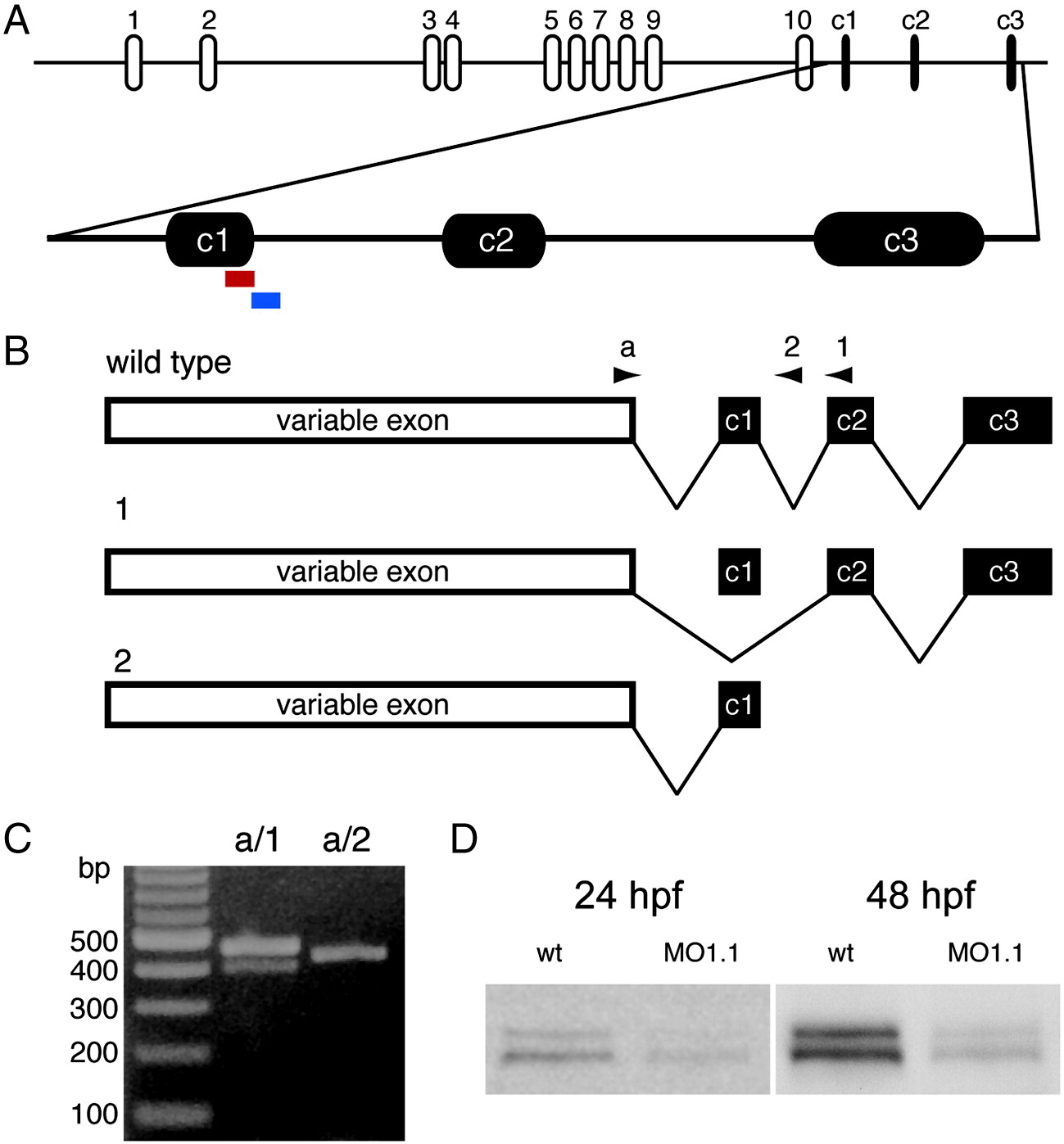Fig. 6
Antisense morpholinos block splicing of pcdh1α. (A) Schematic diagram showing the strategy for disrupting pcdh1α, using splice-blocking morpholinos. The red and blue bars show the relative positions of MO1.1 and MO1.2, respectively. (B) Schematic describing the predicted outcomes of our pcdh1α splice-blocking strategy. The labeled arrows indicate the positions of our diagnostic PCR primers. (C) RT-PCR using RNA from morpholino injected embryos. Lane a/1 shows two bands, the upper is representative of wildtype mRNA, in which splicing has occurred properly. The lower band reflects the deletion of constant exon 1, in which the pcdh1α variable exons have been spliced directly to constant exon 2. Constant exon 2 and the variable exons are in different reading frames, resulting in a stop codon shortly after the end of the variable exons (variant 1 in panel B). Lane a/2 shows a band that results from the inclusion of the C1/C2 intron. This product is also truncated, with a stop codon occurring shortly after the end of constant exon 1 (variant 2 in panel B). In this experiment, aberrantly spliced variants account for > 60% of the detected transcripts. (D) To assess the degree of protein loss in response to morpholino injections, we performed Western blots at 24 and 48 hpf. The levels of both bands of the doublet are decreased in response to MO1.1 morpholino injection. At 24 hpf, the levels of Pcdhα were reduced to ∼ 26% of wild type levels, while at 48 hpf, the levels were reduced to ~18%.
Reprinted from Developmental Biology, 321(1), Emond, M.R., and Jontes, J.D., Inhibition of protocadherin-alpha function results in neuronal death in the developing zebrafish, 175-187, Copyright (2008) with permission from Elsevier. Full text @ Dev. Biol.

